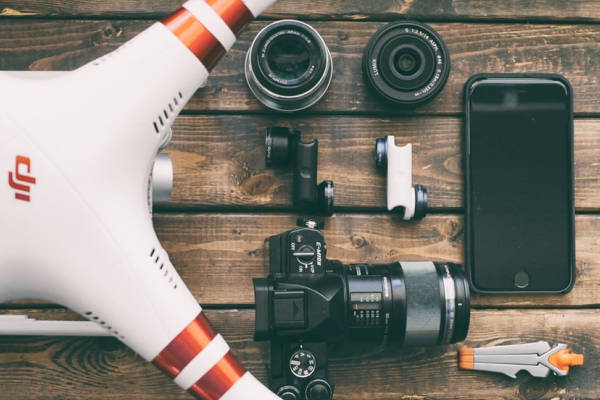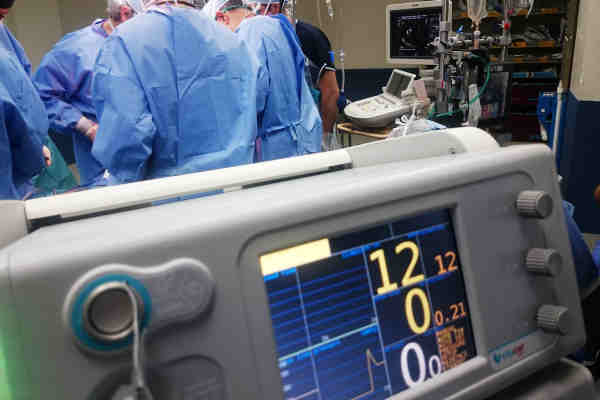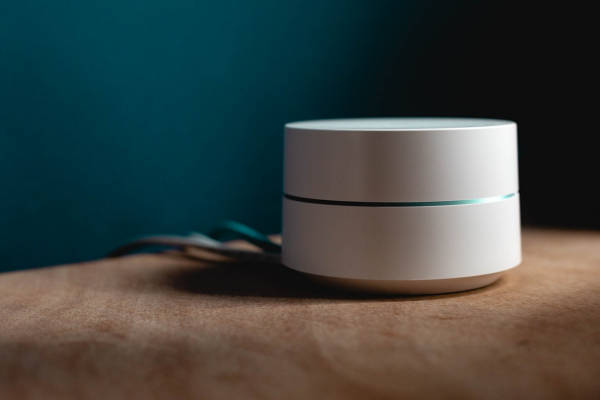What Is FCC Part 15 Testing?

What is FCC Part 15 Testing?
In terms of compliance testing, a large portion of our clients are building devices of all sorts that require testing to FCC Part 15. Everyone is happy to talk about FCC Part 15 Testing, but what exactly is FCC Part 15? It’s not immediately clear.
You’ve doubtlessly read about the FCC’s distinction between an intentional radiator, unintentional radiator, and incidental radiator – but where is all this information coming from? Believe it or not, it’s actually freely available online and can be easily accessed.
FCC Part 15 is quite honestly a random designation the FCC came up to set out the regulatory standards under which intentional, unintentional, or incidental radiators can be operated without an individual license. That’s it. It’s that simple. (Keep in mind, certain users of frequencies like your cell phone company, TV Broadcaster, or local Ham are actually licensed users and they do not test under Part 15. In fact licensed spectrums users are ultimately licensed according to the Communications Act of 1934! How is that for an old requirement!).
So what is the master source of all these FCC Parts, that dicate what type of testing that is required? It’s actually under Title 47 of the Code of Federal Regulations. If you just spent a minute to go read up on Title 47 you’ll see that there are hundreds of chapters and sub-standards under the complete Title 47. It’s truly a monumental document.
If you dig a little further though, look under 47 CFR Subchapter A - GENERAL, you’ll find a much more easy to manage list of Part numbers. If you click PART 15 - RADIO FREQUENCY DEVICES , that it the primary starting point of the FCC’s regulations of electronics under Part 15.
What you’ll find is that Part 15 is broken up into Subparts, which are then delineated by section. These are commonly delineated as 47 CFR § 15.X. (Where X is the section number under Part 15).
If you dig into the underlying regulation, what you’ll find is that Part 15 is not the only FCC part number that your product could require testing under. In fact there are number related FCC parts that specify the required EMC testing for electronic devices.
The vast majority of devices are considered intentional or unintentional radiators and that is precisely what FCC Part 15 testing is setup to evaluate.
What are my FCC testing obligations for my device under Part 15?
In 47 CFR § 15.5, the FCC details the general conditions of operating unlicensed devices. The FCC expects that the operation of your end device (whether it is an intentional or unintentional radiator) results in no harmful interference to other users, your device is capable of operating under the influence of other Part 15 devices, and that if your device is causing any types of unacceptable emissions that you will cease operating the device. Keep in mind this is “regulatory goal” that the FCC is trying to meet. What measurements and methods that need to be employed to meet this regulatory goal are quite another thing.
What are the difference between Class A & Class B Devices?
The FCC has different EMC limits for equipment depending on the environment in which they will be used in.
The Class A limits are designed for devices that are used in commercial, industrial, or businesses and which are not marketed for use in the house or by the general public.
Class B limits are used for digital devices which are marketed for primary usage in a residential environment and for general use by the public.
The FCC permits higher levels of EMI for the Class A limits versus the Class B limits.
Generally speaking, manufacturers of industrial equipment will first try to meet Class B limits (even if they have industrial equipment). The reason being that a device which meets Class B limits (even industrial equipment) has “bragging rights” as to having a low level of emissions. (Yes, we know “bragging rights” are pretty relative to the niche of compliance testing, but if you are marketing industrial equipment if you could demonstrate your design could be safely operated in your grandmother’s basement why wouldn’t you?)
What is an unintentional radiator?
The FCC provides a list of defined terms under 47 CFR § 15.3, which as you begin to analyze your product will be a common reference point.
According to 47 CFR § 15.3, an unintentional radiator is “any device which generates radio frequency energy for use within the device, or that sends radio frequency signals by conduction to associated equipment via connection wiring, but which is not intended to emit RF energy by radiation or induction”
That’s a bit of a mouthful, but the FCC is basically defining an unintentional radiator as any device which is not used to send an RF signal.
Isn’t there some kind of exception to testing an unintentional radiator?
But wait! There’s more and this often trips up first-time filers.
If you look further under 47 CFR § 15.3, you’ll find a definition of “Digital device”. The FCC defines a digital device as an intentional radiator that generates or uses timing pulses in excess of 9,000 pulses (cycles) per second and uses digital techniques.
Clients from time to time will reference this definition and and suggest that their device does not require FCC Part 15 testing because it does not operate over 9,000 pulses per second. Luckily this situation is not too common, but what you’ll ultimately find is that testing still will be required as this device would be considered an incidental radiator and the FCC still requires engineers to evaluate their devices. (For purposes of this article, we are going to bracket off the incidental radiator classification. But you can always feel free to contact us for a personal discussion if you think you have a device that is an incidental radiator).
You’ll also find some uncommon exceptions for FCC testing under Part 15 for devices that are integrated in automobiles and some other uncommon use-cases.
But by and large in this modern day of embedded systems, the vast majority of devices are powered by microcontrollers of all sorts and operate well over this digital device limitations.
We’re sorry to say, but there are very few exceptions to testing your unintentional radiator.
What is an intentional radiator?
An intentional radiator is conceptually a much easier concept: any electronic that deliberately uses radio waves / RF to communicate. Common types of radio transmitters include cell phones, garage door openers, wireless microphones, remote controls, and various IoT sensors and other devices use throughout the home.
One area of confusion can arise with wireless chargers that appear to use RF waves to charge devices and transmit data. Even though these devices appear to be intentional radiators using radio waves to wirelessly charge devices they actually are treated under FCC Part 18 as Industrial, Scientific, Medical (ISM) which incidentally uses RF energy for its purposes. These devices are not tested under Part 15 (but of course there are exceptions to this, if the usage of the incidental energy is also used for purposes beyond only charging devices).
As a side note, we provide comprehensive FCC testing for all types of intentional radiators, so if you are working on any type of intentional radiator that requires FCC certification please feel free to contact us for a comprehensive systems analysis and quote for testing.
What is an incidental radiator?
47 CFR § 15.3 has a vague definition of incidental radiators as “A device that generates radio frequency energy during the course of its operation although the device is not intentionally designed to generate or emit radio frequency energy. Examples of incidental radiators are dc motors, mechanical light switches, etc.”
The FCC has a particularly vague guidance as to how these devices should be tested: according to the FCC as per 47 CFR § 15.13 the only guidance that the FCC provides is that manufacturers of incidental radiators should exercise “good engineering practices” to minimize the risk of EMI and harmful interference from being generated from these products.
In the course of our EMC testing business we have found very few devices that would quality as incidental radiators. In most cases, an incidental radiator is usually an end component that needs to be integrated in a final product. So in many ways the emissions from the incidental radiator will become part of the Part 15 testing of the end product (whether it is an intentional radiator or unintentional radiator)
The primary case we tend to send is clients designing DC motors. Our general recommendation is to perform FCC Part 15 testing on the motor as a means to demonstrate that your end product can be successfully integrated in an end product and will not cause any over-the-limit emissions.
For purposes of FCC Part 15 testing, incidental radiators are a bit of an anomaly so we will not address them any further in the contact of FCC Part 15 testing and certification.
So I’ve built my end product, and made a determination of whether it is an intentional radiator or an unintentional radiator – what next?
In 2018, the FCC simplified the Part 15 testing routes and has created two different paths which directly correlate to your end device.
If you’ve created an unintentional radiator, the FCC now requires that you perform FCC Part 15 testing under the Supplier’s Declaration of Conformity (SDoC). We’ve previously detailed the Supplier’s Declaration of Conformity process in another blog post which you can read about in earlier details.
However, if you have an intentional radiator the FCC will require a more detailed procedure called an FCC Certification which is the most strict testing regime under the FCC’s Part 15 testing.
What is required for Supplier’s Declaration of Conformity (SDoC) Part 15 Testing?
Under the Supplier’s Declaration of Conformity (SDoC) procedure, manufacturer’s of electronics are required to perform FCC testing for their unintentional radiator. This testing is referred to as FCC Part 15B testing (note that the “B” does not denote the class limits, as FCC Part 15B testing can be performed to the Class B or Class A limits.)
The FCC requires all of the following under to meet the Supplier’s Declaration of Conformity (SDoC):
- A detailed test report of formal EMC measurements demonstrating that your product meets either Class B or Class A Part 15 EMI limits.
- Formal chamber testing will include both Radiated Emissions & Conducted Emissions
- Your product manual must have the required regulatory language and warnings to inform users that your product meets FCC Part 15 limits.
- As a new addition under the SDoC, your product manual also must contain a compliance statement which identifies the responsible party of the product who can be contacted for any FCC compliance needs in the future
- Under the SDoC, your product may be labelled with the FCC Logo and should have a product label with a model number that consumers can uniquely identify your product from.
We can perform Supplier’s Declaration of Conformity (SDoC) Part 15 Testing, so if you have an immediate please feel free to contact us for a quote.
What is required for FCC Certification Testing under Part 15?
FCC Certification testing (referred to as FCC Part 15C – where the “C” incidentally corresponds to “certification”) is similiar to SDoC tesing but requires radio specific wireless testing and is meant to be used to certify and test intentional transmitters.
FCC Part 15C Testing requires the following:
- You will need to perform chamber testing to the FCC Part 15B for the radiated and conducted emissions, but in addition you will be required to run your product’s radio in a specific pattern in order to demonstrate wireless compliance. (As former wireless designers we commonly assist in the firmware design process for FCC testing, which is a bit uncommon for an EMC testing lab.).
- All FCC certification testing must be performed by an accredited laboratory in order for the results to be accepted by the FCC.
- New applicants will need to apply for a Grantee Code which will become part of their final FCC ID, which is a unique identifier that is required on each end device.
- Similar to Part 15B testing, your product manual will require certain particular disclosures and warnings to inform users that it meet’s the FCC’s certification requirements as to emissions and radio usage.
- If your product is a body worn device, depending on the particular radio usage, you may be required to perform Specific Absorption Rate (SAR) testing which measures the intentional emissions of your device and it ensures that the RF exposure characteristics of your end device are not harmful to the human body.
- Upon finishing your emissions and RF testing, we will submit your test reports to an FCC authorized Telecommunication Certification Body (TCB). The TCB will perform an evaluation of the testing results and also examine the technical documents of your product’s design to ensure it meets all of the regulatory requirements. Upon a successful review, the TCB will then post your device to the public database.
How Can Sunfire Testing Assist With my FCC Part 15 Testing?
We specialize in FCC Part 15 testing, and work with a wide a range of products. We can assist in both general Part 15B, Supplier’s Declaration of Conformity (SDoC) testing for your unintentional radiators and we can help testing any wireless devices for the FCC Part 15C certification process.
Our particular specialty as former wireless designers is FCC testing complex wireless devices.
We have worked on complex, multi-transmitter military devices, incredibly small portable wireless smartwatches, and hundreds of general intentional radiators of all frequencies and types. With our fixed price testing approach, we can support your design team not only on the actual testing but we can provide firmware examples and extended support as to how to prepare devices for successful chamber testing.
We are experts in SDoC EMC testing and are well versed in the updated testing requirements the FCC has presented. You can rely on our experienced team to guide you Part 15B testing for your unintentional radiator. Upon project completion, we’ll provide compliance support not only in the form of test reports but also as to what manual language, declarations, and product labeling will be needed in order to market your product.
Our approach the FCC Part 15 testing is a fixed price, end-to-end project – we have technical expertise in both the EMC testing and design phases of your product, but also provide comprehensive compliance support for the non-technical elements of your FCC compliance needs.
Submit a quote today and let us show you how we can assist on your next FCC testing project.
We make compliance testing easy.
Submit your project details today for a no-cost quote
Request Quote

